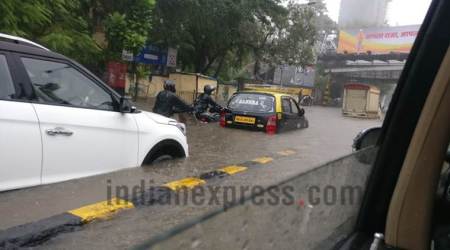 The now-resolved Doklam crisis between India and China never held the possibility of a world war but learning the wrong lessons from its resolution could prove costly.
The now-resolved Doklam crisis between India and China never held the possibility of a world war but learning the wrong lessons from its resolution could prove costly.
It is rather well-known that the First World War was triggered by the assassination of Archduke Franz Ferdinand, but there had been a series of crises in Europe from the late 19th century that had threatened peace. Each of those crises was somehow resolved diplomatically. The European powers learnt the wrong lessons from those denouements, eventually leading to the global conflict in 1914.
The now-resolved Doklam crisis between India and China never held the possibility of a world war but learning the wrong lessons from its resolution could prove costly. The first lesson that should not be learnt is about the relative strength of Indian military power vis-a-vis China. As good and professional as the Indian armed forces are, they really don’t outmatch the Chinese in a conflict scenario. Even at Doklam, India did not have the military capacity to defeat the Chinese, it had sufficient military strength to only hold on to its positions and inflict heavy casualties on the Chinese army for a short period of time.
This, essentially, is the nub of the problem on the China border. Even in its strongest areas, the Indian deployment is oriented towards defending territory. Because of the high density of infrastructure on the Chinese side, the Indians have started responding with the Line of Control (LoC) mindset of a penny-packet deployment. The Indian hand is also pushed because there is little political gumption in New Delhi for losing some territory initially, to draw the Chinese in and then inflict punitive losses. The state of progress of infrastructure on the Indian side, both strategic railway lines and important roads, has been commented upon for years but has shown no significant progress.
Related to it is the question of Indian military preparedness. Besides the well-known hollowness due to delay in military modernisation schemes — only 32 fighter squadrons or just 13 submarines or poor air defence profile — the fact that the army’s ammunition reserves are not stocked for a 10-day-long war is a worrying sign. Designated to be prepared for a two-front collusive threat from China and Pakistan, Indian armed forces cannot afford to fulfill their role successfully if they are not properly equipped and stocked. Now that the two forces have pulled away from Doklam, not only should these shortages be made up on a war-footing but systems and processes reformed.
The second wrong lesson that can be learnt is about the impact on Bhutan. While Bhutan has been a strong Indian ally and has stood by New Delhi during the standoff, the last seven weeks have emboldened those voices in Bhutan which seek a “balanced foreign policy”, that is, opening of ties with China. Even if the Bhutan-China border talks are canceled this year, they are bound to resume next year. In all its statements following the disengagement, the Chinese have emphasised their sovereignty over the area. The Chinese offer of a swap for Doklam with disputed areas in the north is bound to be renewed, an offer which has always interested Thimphu.
As China starts courting Thimphu and as Bhutan starts seeking greater ties with Beijing, it would be unfair to expect Bhutan to choose between India and China. The Bhutanese statement welcoming the resolution of Doklam standoff is a pointer, however mild, in that direction.
The third wrong lesson that can be drawn from the crisis is about international support for India against China. Besides a tentative statement by the Japanese ambassador, most other countries — including the United States — asked New Delhi and Beijing to resolve the situation peacefully. While most countries were happy that India was standing up to China, their own relations with Beijing made it very difficult for them to state their support openly.
Even if there are muted voices of appreciation or support for Delhi from various countries now, they are no guarantor of future support if India and China were to clash again. India handled the Doklam crisis single-handedly and will have to be prepared to handle any such situation similarly in the future.
There is little doubt that the government officials who dealt with the Doklam crisis are fully cognisant of these realities. They are certainly aware that mature diplomacy involves keeping lines of communication open, and that negotiations should be conducted in a spirit of “give and take”. But the danger is from the public narrative of triumphalism and victory created by the experts and sections of the media. In a democracy, the belief of the public can create its own pressures upon the government. The Doklam crisis may be over, but another crisis between India and China cannot be ruled out. Learning the wrong lessons from Doklam will then have dangerous consequences, as seen in the case of the First World War in Europe.

